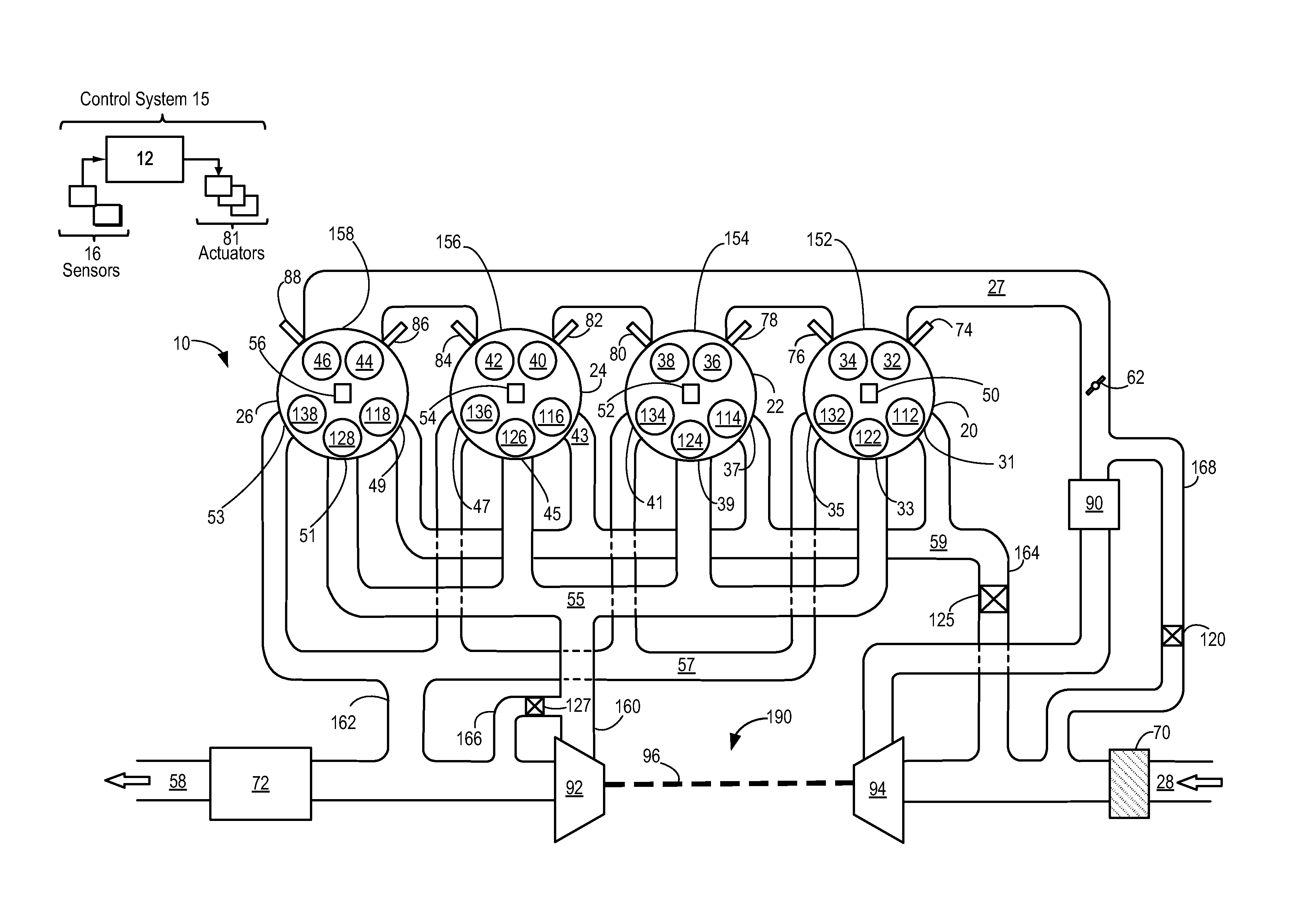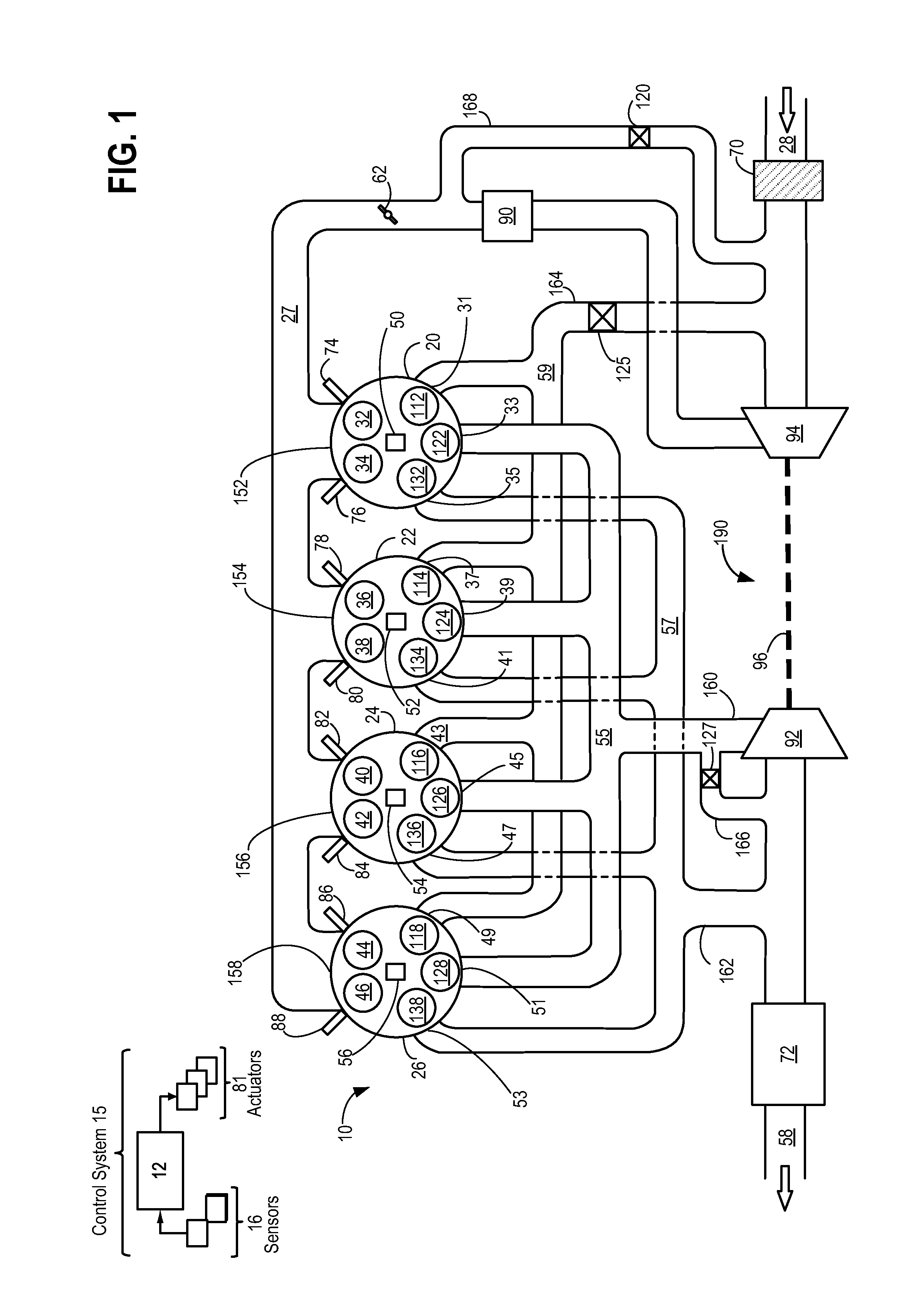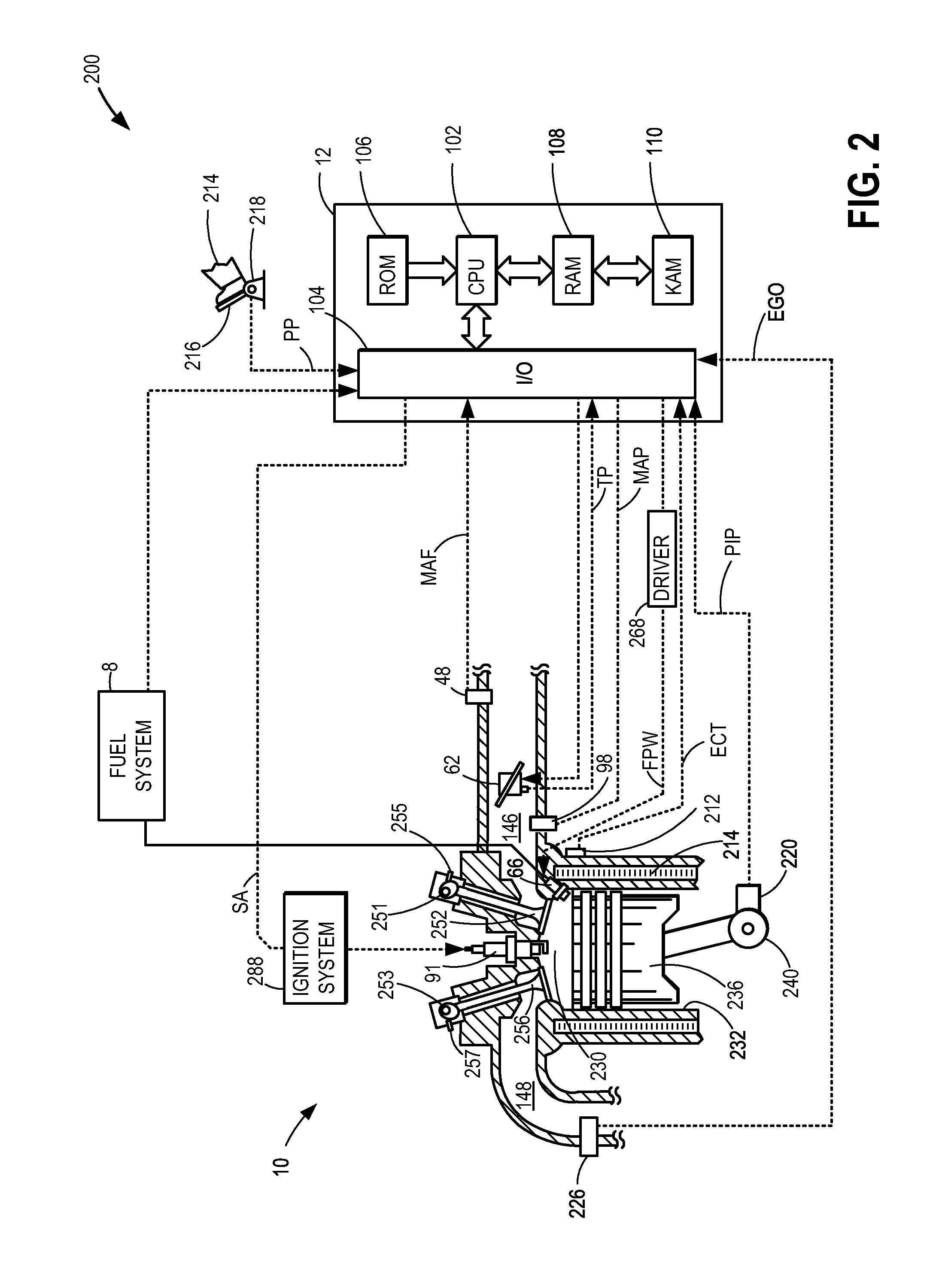Method to improve blowthrough via split exhaust
a split exhaust and blower technology, applied in the direction of machines/engines, output power, electric control, etc., can solve the problems of reducing fuel economy, limiting maximum torque, engine knocking, etc., to reduce fuel economy, increase engine power density, and limit maximum torque
- Summary
- Abstract
- Description
- Claims
- Application Information
AI Technical Summary
Benefits of technology
Problems solved by technology
Method used
Image
Examples
Embodiment Construction
[0015]The following description relates to systems and methods for controlling knock in an engine, such as the engine system of FIGS. 1-2, by exhausting an engine cylinder through three distinct passages. Specifically, within one combustion cycle, a first or blowdown portion of an exhaust may be guided to a turbine of a turbocharger through a first passage, a second or scavenged portion of an exhaust may be directed to an emission control device via a second passage while a third portion of exhaust gases towards the end of an exhaust stroke mixed with blowthrough air may be directed to an inlet of a compressor in a turbocharger through a third passage. Each cylinder of the engine, thus, may comprise five valves: two intake valves, two exhaust valves and one compressor inlet valve. An engine controller may be configured to perform a control routine, such as the routine of FIG. 4, to operate the compressor inlet valve based on a variety of engine operating conditions such as those sho...
PUM
 Login to View More
Login to View More Abstract
Description
Claims
Application Information
 Login to View More
Login to View More - R&D
- Intellectual Property
- Life Sciences
- Materials
- Tech Scout
- Unparalleled Data Quality
- Higher Quality Content
- 60% Fewer Hallucinations
Browse by: Latest US Patents, China's latest patents, Technical Efficacy Thesaurus, Application Domain, Technology Topic, Popular Technical Reports.
© 2025 PatSnap. All rights reserved.Legal|Privacy policy|Modern Slavery Act Transparency Statement|Sitemap|About US| Contact US: help@patsnap.com



